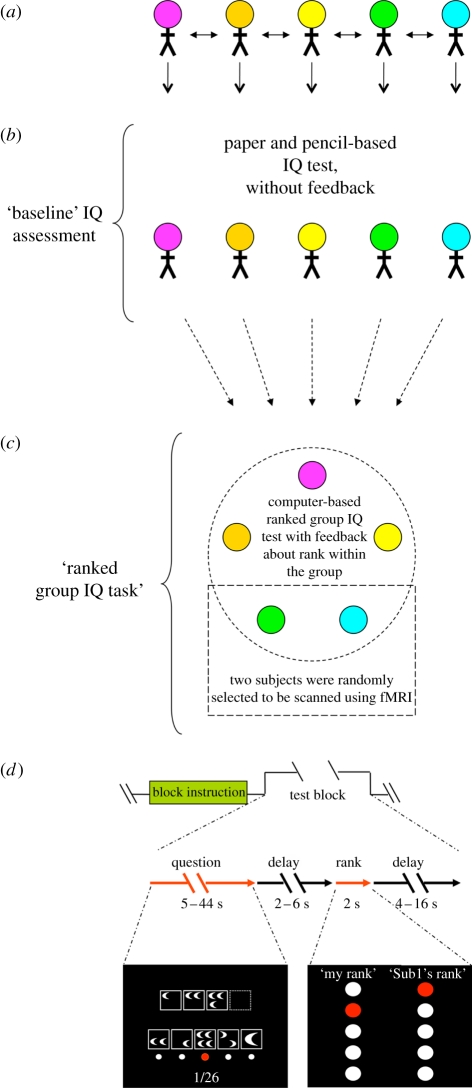Figure 1.
Five-person ranked group IQ paradigm. (a) Five subjects are recruited per group experiment. Subjects are introduced to each other by name prior to the beginning of the task. (b) A baseline IQ (PIQ) is assessed prior to the group scan: subjects answer questions from Cattell's culture fair intelligence test (questions from form 3A) using a pencil and paper—no feedback is given to the subjects during that time. The test is taken in an open room and all members of the group are present. Subjects' individual scores are not calculated until the end of the ranked group IQ task (see below). (c) Following the completion of the paper and pencil IQ task, the five-person group then participates in a five-person ranked group IQ task. During this task, subjects answer the same questions at the same time and are given feedback in the form of a ranking within the group of five, as well as the rank of a pseudorandomly selected member of the group. This test contains a total of 92 trials (one question per trial). The questions are modified from Cattell's culture fair intelligence test, forms 2A and 2B, and contain four types of questions that appeared in four corresponding blocks. Two of the five subjects are randomly selected to have their brains scanned using fMRI during this portion of the experiment. (d) Four blocks of thirteen questions are presented in a random sequence. Each block begins with an instruction screen (‘Block instruction’). The questions within a block are then presented in random sequence (‘Test block’; an illustrative example of a question screen is shown in the bottom left). Feedback about each subjects' performance is presented following each completed test question. Feedback is given in the form of a rank within the group, which is calculated based on the number of questions answered correctly out of the previous ten. The rank reveal screen (bottom right) consists of each subject's own rank (‘My rank’) and a pseudorandomly selected subject's rank (‘Sub1's rank’ where Sub1 is actually a pseudorandomly selected subject's first name). All participating subjects see their own rank and the same randomly selected subject's name and rank on each rank reveal screen.

